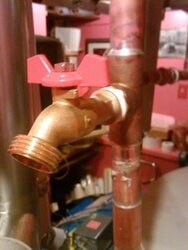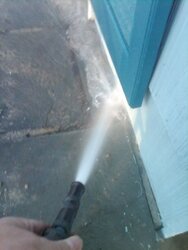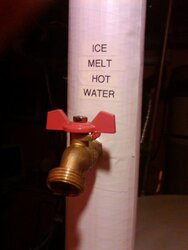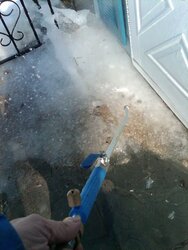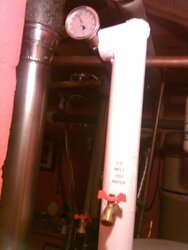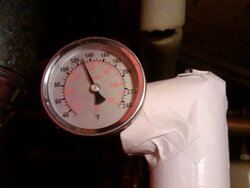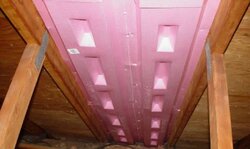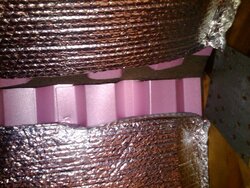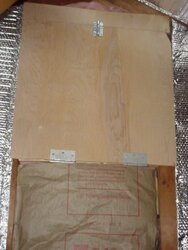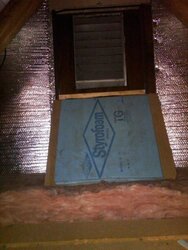Hello
With all the roof ice dams and icy front stairs and driveway, I finally did something.
Has anyone tried hooking up a hose to get a nice Hot water spray for melting some of this ICE?
I found 3 ways to easily connect a garden hose up to blast hot water on the steps, roof and driveway to melt the ice.
1. Attach a portable dish washer adapter to the kitchen faucet
Connect the hose and turn just the hot water on.
Adapter can be purchased at Home Depot for approx $4.95
2. Purchase a shower water diverter and hose adapter for the shower. Install when noone is taking a shower.
Connect up the hose.
Turn on just the hot water.
Divert the water to the hose with the diverter button.
Hot water hose blasting kit for shower!
__1. Watts A-668 Â Â Â Â Â Â $2.95 Â
 3/4 †MH to 1/2 †FIP
__2. Shower Diverter    $15.98
________________Total  $18.93
3. Solder in a ball valve Boiler drain to the Hot water pipe on your hot water heater or DHW line.
Connect up the hose
Turn the water on and Blast away.
Parts (Home Depot or Local Heating Supply Store)
__1. 3/4 x 3/4 Sweat T with 1/2 " Thread $10.93
__2. Ball valve threaded Boiler Drain $3.29
__3. 3 ' piece of pipe insulation $5.50
_______________________________$19.72
Since adapters and hoses are NOT the best items to have in the kitchen and bath I went with # 3
01. Cut Hot water line
Clean and Flux
02. Install Brass T
Solder
03. Use TFE Paste on Boiler Drain
Screw in
04. Insulate and Label
With all the roof ice dams and icy front stairs and driveway, I finally did something.
Has anyone tried hooking up a hose to get a nice Hot water spray for melting some of this ICE?
I found 3 ways to easily connect a garden hose up to blast hot water on the steps, roof and driveway to melt the ice.
1. Attach a portable dish washer adapter to the kitchen faucet
Connect the hose and turn just the hot water on.
Adapter can be purchased at Home Depot for approx $4.95
2. Purchase a shower water diverter and hose adapter for the shower. Install when noone is taking a shower.

Connect up the hose.
Turn on just the hot water.
Divert the water to the hose with the diverter button.
Hot water hose blasting kit for shower!
__1. Watts A-668 Â Â Â Â Â Â $2.95 Â
 3/4 †MH to 1/2 †FIP
__2. Shower Diverter    $15.98
________________Total  $18.93
3. Solder in a ball valve Boiler drain to the Hot water pipe on your hot water heater or DHW line.
Connect up the hose
Turn the water on and Blast away.
Parts (Home Depot or Local Heating Supply Store)
__1. 3/4 x 3/4 Sweat T with 1/2 " Thread $10.93
__2. Ball valve threaded Boiler Drain $3.29
__3. 3 ' piece of pipe insulation $5.50
_______________________________$19.72
Since adapters and hoses are NOT the best items to have in the kitchen and bath I went with # 3
01. Cut Hot water line
Clean and Flux
02. Install Brass T
Solder
03. Use TFE Paste on Boiler Drain
Screw in
04. Insulate and Label


